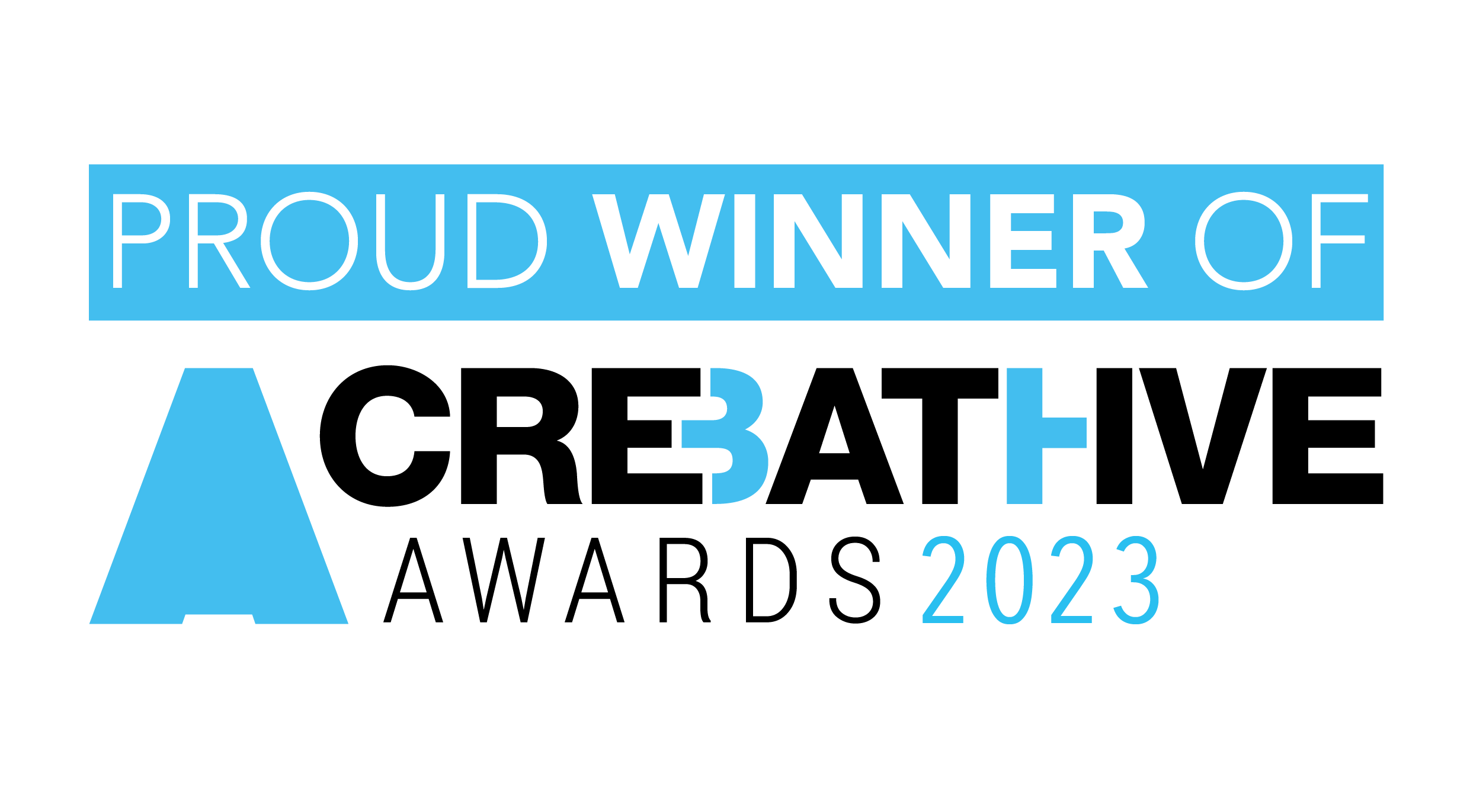Customer Lifetime Value (CLV)
Unlocking long-term value: Harnessing the power of customer lifetime value for sustainable growth
Stay in touch for insights, strategies and news

The lifetime value of a customer is not just about how much they spend, but the impact they have on your business over time.
BATH MARKETING AGENCY
In today's ever-changing business landscape, understanding and maximizing Customer Lifetime Value (CLV) is crucial for sustainable growth and long-term success. By recognizing the value in nurturing lasting customer relationships, businesses can strategically align their efforts to optimize CLV and drive profitability. This introduction will explore the significance of CLV, its impact on business outcomes, and provide insights into leveraging CLV to create customer-centric strategies.
Customer Lifetime Value Opportunity

Photo by Firmbee.com
Why Customer Lifetime Value (CLV) is a Huge Opportunity
Customer Lifetime Value (CLV) is a crucial metric that offers significant opportunities for businesses:
Long-Term Revenue Potential: By understanding the lifetime value of your customers, you can make strategic decisions to maximize revenue over time. Investing in customer retention and loyalty can lead to sustained revenue streams and increased profitability.
Cost-Efficient Marketing: Acquiring new customers can be costly, while retaining existing ones is often more cost-effective. By focusing on increasing CLV, you can allocate your marketing budget more efficiently and generate higher returns on investment.
Customer-Centric Approach: Prioritizing CLV encourages a customer-centric approach to business. By delivering exceptional experiences and building long-term relationships, you can create brand advocates who not only contribute to CLV but also attract new customers through referrals.
Forecasting and Planning: Understanding CLV allows businesses to forecast future revenue and plan for long-term growth. By accurately predicting customer value, you can make informed decisions about product development, marketing strategies, and resource allocation.
Competitive Advantage: Businesses that effectively leverage CLV gain a competitive edge in the market. By nurturing loyal customers and maximizing their lifetime value, you can differentiate your brand and build a sustainable advantage over competitors.
How to Calculate Customer Lifetime Value
To calculate CLV, use the following formula:
Customer Lifetime Value = Customer Value × Average Customer Lifespan
The Harvard Business Review has a clever CLV calculator here.
Customer Lifetime Value Example
In this example, the customer lifetime value (CLV) for the hypothetical company, Amica, is calculated as follows:
Therefore, the customer lifetime value for Amica is £300. This means that, on average, each customer is expected to generate £300 in revenue over their lifetime with the company.
CLV Contributing Factors
The customer lifetime value (CLV) of a customer is influenced by various factors. Here are some key factors that contribute to the calculation of CLV:
Average Value of a Sale: The average amount of money a customer spends per transaction is an important factor in determining CLV. Higher average sale values lead to a higher CLV.
Average Number of Transactions: The frequency at which a customer makes purchases from the company impacts CLV. Customers who make more frequent transactions have higher CLVs.
Average Customer Lifespan: The duration of the customer's relationship with the company also affects CLV. Longer customer lifespans result in higher CLVs.
Customer Acquisition Cost: The cost associated with acquiring a new customer is inversely related to CLV. Lower acquisition costs lead to higher CLVs.
Customer Retention Rate: The ability to retain customers over an extended period is crucial for CLV. Higher customer retention rates result in higher CLVs.
Profit Margin: The profit margin on each transaction is an essential factor in calculating CLV. Higher profit margins contribute to higher CLVs.
Upselling and Cross-selling: The success of upselling and cross-selling efforts can increase the average value of a sale and the number of transactions, thereby boosting CLV.
Referral Rate: Customers who refer others to the company can have a positive impact on CLV. Higher referral rates can lead to increased customer acquisition and higher CLVs.
Churn Rate: The rate at which customers stop doing business with the company affects CLV. Lower churn rates result in higher CLVs.
Customer Lifetime Value Strategies

Photo by Ben McLeod
Give Your Customers a Reason to Come Back
To maximize CLV, it's crucial to give your customers a compelling reason to return to your business. Here are some strategies to achieve this:
Exceptional Customer Service: Provide personalized and attentive customer service to create a positive and memorable experience for your customers.
Loyalty Programs: Develop enticing loyalty programs that reward customers for their repeat business, encouraging them to choose your brand over competitors.
Personalized Marketing: Tailor your marketing efforts to provide relevant and personalized offers that resonate with each customer's preferences and past interactions with your business.
Quality Products and Services: Consistently deliver high-quality products and services that meet or exceed customer expectations, reinforcing their trust and satisfaction.
Drive Revenue with Thank You Emails
Thank you emails are a powerful tool for driving revenue and enhancing customer loyalty. By leveraging this strategy, you can:
Express Gratitude: Show appreciation to your customers for their business, fostering a positive sentiment and reinforcing their relationship with your brand.
Encourage Repeat Purchases: Include exclusive offers or discounts in thank you emails to incentivise customers to make additional purchases, contributing to increased CLV.
Solicit Feedback: Use thank you emails as an opportunity to gather valuable feedback from customers, enabling you to improve your products or services based on their insights.
Cross-Sell and Upsell: Recommend complementary products or services in thank you emails, effectively promoting upsells and cross-sells to drive additional revenue.
Build Excitement with Fulfilled Order Emails
Fulfilled order emails provide an excellent opportunity to engage customers and enhance their overall experience with your brand. By leveraging this strategy, you can:
Express Gratitude: Thank customers for their purchase and express genuine appreciation for their support, creating a positive and memorable interaction.
Provide Value-Added Content: Include useful tips, product recommendations, or educational content related to the purchased items, adding value to the customer's experience and potentially driving additional sales.
Promote Brand Loyalty: Reinforce the customer's decision to choose your brand by highlighting unique selling points, brand values, and the overall benefits of being a customer.
Encourage Social Sharing: Encourage customers to share their purchase on social media, fostering brand advocacy and potentially attracting new customers through social proof.

Photo by Yannik Mika
Customer Survey Emails
Engaging customers through survey emails can provide valuable insights and contribute to enhancing customer satisfaction and loyalty. By leveraging this strategy, you can:
Gather Feedback: Conducting surveys allows you to collect feedback directly from customers, enabling you to understand their preferences, needs, and areas for improvement.
Show Appreciation: Express appreciation for the customer's participation in the survey, reinforcing a positive relationship and demonstrating that their opinions are valued.
Drive Continuous Improvement: Utilize survey responses to identify opportunities for enhancing products, services, and overall customer experience, leading to increased customer satisfaction and potentially higher CLV.
Personalize Offers: Based on survey insights, personalize future offers and communications to better align with customer preferences and increase the likelihood of repeat purchases.
Bounce Back Vouchers
Bounce back vouchers are an effective strategy for increasing customer retention and encouraging repeat purchases. By leveraging this approach, you can:
Incentivize Return Visits: Offer customers a compelling reason to revisit your business by providing them with exclusive discounts or special offers on their next purchase.
Capture Customer Interest: Use bounce back vouchers to introduce new products, services, or seasonal promotions, capturing the customer's interest and driving additional sales.
Enhance Customer Satisfaction: By providing added value to customers through bounce back vouchers, you can enhance their overall satisfaction and loyalty to your brand.
Track Effectiveness: Monitor the redemption rates and impact of bounce back vouchers to gauge their effectiveness in driving repeat business and increasing CLV.
Win Back Emails
Implementing win back emails is a proactive strategy for re-engaging inactive or lapsed customers and encouraging them to return to your business. By leveraging this approach, you can:
Personalize Offers: Tailor win back emails with personalized offers or incentives, demonstrating your desire to re-establish a positive relationship with the customer.
Acknowledge Inactivity: Address the customer's inactivity in a respectful manner, expressing a genuine interest in their satisfaction and inviting them to reconnect with your brand.
Provide Value: Offer compelling reasons for the customer to return, such as exclusive promotions, new product highlights, or enhanced services, showcasing the value of re-engaging with your business.
Measure Effectiveness: Track the performance of win back email campaigns by monitoring open rates, click-through rates, and subsequent customer re-engagement to gauge their impact on CLV.

Photo by NEOM
Sunset Disengaged Subscribers
Sunsetting disengaged subscribers involves a strategic approach to managing inactive or unresponsive subscribers within your email list. By implementing this approach, you can:
Reallocate Resources: Redirect marketing resources towards engaged subscribers who are more likely to contribute to CLV, ensuring efficient resource allocation.
Maintain List Health: Removing disengaged subscribers helps maintain the quality and engagement levels of your email list, leading to better deliverability and overall list performance.
Enhance Engagement Metrics: By sunseting disengaged subscribers, you can improve your email engagement metrics, such as open rates and click-through rates, contributing to more effective email marketing efforts.
Comply with Regulations: Ensure compliance with data protection regulations by managing and maintaining a clean and engaged subscriber list.
Setup a Loyalty Program
Encourages Repeat Business: A loyalty program provides incentives for customers to make repeat purchases, thereby increasing their overall lifetime value to your business.
Enhances Customer Retention: By rewarding customer loyalty, a well-designed loyalty program can increase customer retention, leading to longer and more valuable relationships with your brand.
Fosters Customer Engagement: Engaged customers are more likely to continue doing business with a brand. A loyalty program can enhance customer engagement by providing personalized rewards and incentives.
Strengthens Brand Loyalty: Loyalty programs create a sense of attachment and allegiance to your brand, leading to increased customer loyalty and advocacy.
Data Collection and Insights: Loyalty programs provide opportunities to gather valuable customer data and insights, which can be used to refine marketing strategies and tailor offerings to better meet customer needs.
Differentiates Your Brand: A well-executed loyalty program can set your brand apart from competitors, attracting and retaining customers who are seeking additional value and benefits.
Other Tips for Maximizing CLV
Focus on Customer Experience: Providing exceptional customer experiences is key to maximizing CLV. Strive to exceed customer expectations at every touchpoint by offering personalized support, timely communication, and convenient purchasing options.
Invest in Relationship Building: Building strong relationships with your customers is essential for long-term success. Engage with them through social media, email marketing, and personalized messaging to foster a sense of loyalty and connection.
Segment Your Customers: Understand the unique needs and behaviours of different customer segments. Tailor your marketing strategies accordingly to provide relevant offers and messaging that resonate with each group.
Continuous Improvement: Regularly analyse customer data, feedback, and behaviour to identify areas for improvement. Continuously refine your products, services, and marketing strategies to meet evolving customer expectations and maximize CLV.
Measure and Track CLV: Implement analytics tools to measure and track CLV over time. This will provide valuable insights into the effectiveness of your strategies and help you make data-driven decisions for future optimization.

Photo by Anton Savinov
CLV Success Metrics
Average Customer Lifespan: Measure the average length of time a customer continues purchasing from your business. Increasing this metric indicates successful customer retention efforts and higher CLV.
Repeat Purchase Rate: Track the percentage of customers who make multiple purchases over time. A high repeat purchase rate signifies customer loyalty and a strong CLV.
Loyalty Program Engagement: Assess the level of engagement with your loyalty programs, such as redemption rates and referrals. Active participation in loyalty programs often correlates with increased CLV.
Customer Satisfaction Scores: Monitor customer satisfaction through surveys, reviews, and feedback. Higher satisfaction scores typically lead to improved CLV as satisfied customers are more likely to remain loyal and make repeat purchases.
Referral Rate: Measure the number of new customers acquired through referrals from existing customers. A high referral rate indicates strong brand advocacy and potential for increased CLV.
Our Customer Lifetime Value Services
Customer Segmentation: We help you identify and segment your customer base into distinct groups based on their behaviours, preferences, and profitability. By understanding the unique characteristics of each segment, we can tailor your marketing strategies to effectively target and engage them, ultimately maximizing CLV.
Loyalty Programs: Our agency can assist you in designing and implementing customer loyalty programs that incentivize repeat purchases, referrals, and engagement. By rewarding loyal customers, you can foster long-term relationships, increase CLV, and encourage brand advocacy.
Personalization Strategies: We develop personalized marketing campaigns that speak directly to each customer's needs, preferences, and purchase history. By delivering relevant and targeted messages, you can enhance customer satisfaction, loyalty, and ultimately extend their lifetime value.
Retention Strategies: Our team can help you implement effective customer retention strategies that focus on reducing churn and increasing customer loyalty. From personalized email campaigns to proactive customer support, we ensure that your customers feel valued, leading to higher CLV.
Upselling and Cross-selling: We assist in identifying upselling and cross-selling opportunities within your customer base. By strategically offering complementary products or services to existing customers, you can increase their lifetime value while enhancing their overall experience.
By implementing these strategies and tips, you can increase Customer Lifetime Value and cultivate long-lasting relationships with your customers. Contact our digital marketing agency today to learn more about how we can help you unlock the full potential of CLV for your business in Bath and beyond.
Notable Achievements
We have established a strong reputation in the marketing industry for our creative approach. Our innovative strategies and exceptional performance have been consistently acknowledged, as evidenced by our selection as finalists for the Disruptor Award at the Drapers Awards in 2022 and 2023. Furthermore, we are proud recipients of the Creative Bath Award in 2023, an honour that we greatly appreciate.
Industry Expertise
We have established ourselves as a reliable partner by successfully collaborating with renowned brands across various industries. Our partnerships span diverse sectors such as direct-to-consumer, fashion, adventure, outdoor, automotive, and retail. Working with esteemed companies including Land Rover, Bentley, Ralph Lauren, John Lewis, Truffle Shuffle, Cotswold Outdoor, Billabong, and Surfstitch, we have showcased our expertise and consistently delivered exceptional results through innovative campaigns.
"Your time is limited, don't waste it living someone else's life."
Steve Jobs
Ready to embark on an exciting marketing partnership? Contact our boutique London, Bristol and Bath Marketing Agency here, and let us be your partner in achieving remarkable digital success!
FAQ
What is Customer Lifetime Value (CLV)?
Customer Lifetime Value (CLV) is a metric that determines the total worth of a customer to your business over the entire duration of their relationship with you. It helps you understand the long-term profitability of acquiring and retaining customers.
How is CLV calculated?
CLV is typically calculated by multiplying the average value of a purchase by the average number of purchases made by a customer during their lifetime, and then multiplying that by the average retention time.
Why is CLV important for my business?
CLV is important because it helps you make informed decisions about customer acquisition and retention strategies. By understanding the value each customer brings to your business, you can allocate your resources effectively and focus on maximizing long-term profitability.
How can I increase CLV?
There are several ways to increase CLV, including improving customer satisfaction, offering personalized experiences, cross-selling or upselling products or services, implementing loyalty programs, and providing exceptional customer service throughout the customer journey.
How does CLV impact my marketing strategy?
CLV can guide your marketing strategy by helping you identify the most valuable customer segments to target, allocate your marketing budget effectively, and tailor your messaging and offers to maximize customer retention and lifetime value.
Are there any tools or software available to calculate CLV?
Yes, there are various tools and software available that can help you calculate CLV, such as customer relationship management (CRM) systems, analytics platforms, and customer data platforms. These tools can automate the process and provide valuable insights into your customers' lifetime value.
Can CLV be used for different types of businesses?
Yes, CLV can be used for businesses across various industries, including e-commerce, retail, subscription-based services, and more. The concept of CLV remains relevant regardless of the type of business, as it focuses on understanding the long-term value of customers.
How frequently should I recalculate CLV?
The frequency of recalculating CLV depends on your business model and industry. However, it is recommended to reassess CLV periodically to account for changes in customer behaviour, market conditions, and other factors that may impact the lifetime value of your customers.
Can CLV be used to predict future revenue?
Yes, CLV can be used to predict future revenue by estimating the potential value of new and existing customers over time. This information can help you make strategic decisions regarding marketing campaigns, product development, and overall business growth.
Does CLV take into account acquisition costs?
Yes, CLV should ideally factor in customer acquisition costs to provide a more accurate assessment of the profitability of acquiring and retaining customers. Subtracting the cost of acquiring a customer from their lifetime value helps determine the net profit generated from that customer.
Industry recognition and awards:


